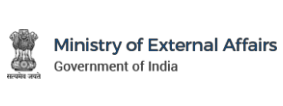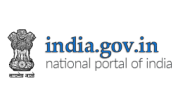Washington DC
I would like to thank Mr. Mathew Stumpf for inviting me to address the Asia Society this afternoon. The Asia Society is a global institution deeply committed to the cause of world peace and prosperity. Over the last five decades, you have been in the forefront of promoting mutual understanding, collaborative activities and strengthening connections among the peoples and institutions of Asia and the United States. It is therefore a special privilege to have this opportunity to share my thoughts on the Strategic Partnership between India and the United States with such a distinguished gathering this afternoon.
The question I am often asked is what informs our expanding partnership with the US. To put our arms around this whole concept, one would first need to understand what India’s foremost national task is for the foreseeable future. We are an ancient civilization but a young nation. Our Prime Minister has often said that India's prime national task in the decades ahead is to turn the historic economic gains of the last twenty years into ‘inclusive’ growth that lifts millions more out of poverty, that revitalizes rural India, that modernizes infrastructure and manufacturing capabilities, that improves agriculture productivity, ensures healthcare and education for all and, that this growth should create a future of opportunities for young Indians who make up most of our demographic today. To achieve these development goals, it is imperative that we keep our doors open to ideas, to capital, to technology and to innovation, ensure that we have a peaceful neighborhood, that we have a well rounded relationship with major powers of the world, the foremost of which is the United States, and that we have an international system of governance which is stable, open and rule-based and encourages the free movement of goods, capital and people.
This, then, is the canvas in which we embed the colors of the India-US partnership. In the completion of our task of nation building, we see the United States as an important partner. To elaborate, our strategic partnership is important, both in the pursuit of achieving India’s national development goals and for advancing global peace, stability and progress. And, today, it is the ‘development oriented focus’ that increasingly animates this ever-growing partnership with the US. And as we seek to build this partnership, we are particularly focused on how we are able to build better lives for the young people in both our countries. People-to-people connections pulsate at the heart of our partnership. It is a relationship that has been described as a defining partnership by President Obama, and an “affair of the heart” by Secretary of State Hillary Clinton. Ambassador Thomas Pickering recently termed it “an effort in mutual exploration” and a relationship that “transcends administrations”. It is oxygenated by principles as well as pragmatism as our Prime Minister Dr. Manmohan Singh has put it. When Secretary Clinton met our Prime Minister in Delhi in May this year, he told her how we had worked steadfastly to strengthen our relations with the US and that the durability and usefulness of this relationship was accepted on all sides of the political spectrum in India.
Strategic Dialogue Process
Only a few weeks ago we held our third Strategic Dialogue in Washington DC co-chaired by Secretary Clinton and External Affairs Minister Krishna. A high-powered delegation accompanied Minister Mr. S. M. Krishna. And the Dialogue was preceded by a number of meetings of bilateral forums in areas covering cyber security, business, information technology, health, science and technology, women and child development. The remarkable growth, the depth and breadth of our engagement is evident in the Joint Statement that was issued after the Dialogue.
Besides the bilateral Strategic Dialogue, in recent years, we have launched a Homeland Security Dialogue; commenced the Higher Education Dialogue, expanded our strategic consultations on regional issues on East Asia, West Asia and on Central Asia and a Trilateral Dialogue between India-US and Japan, increased interaction between our defence forces, made progress on our joint endeavour to develop clean energy projects and provided further impetus to the rapidly expanding science & technology, financial and economic engagement between our two countries. We have made progress in adding a global dimension to our partnership with an agreement to work jointly in Afghanistan in capacity building, agriculture, and women’s empowerment, and promoting development projects in Africa. Speaking at the plenary session of Strategic Dialogue last month, India’s External Affairs Minister Mr. S.M.Krishna said, "What was once novel and unprecedented in our relationship is now routine and normal". This aptly captures the breadth and scope of growing India-US partnership in recent years, and the comfort and candor that girds our engagement.
The menu of future cooperation emerging from the Strategic Dialogue is unprecedented and covers almost every field of human endeavor. But there are voices, and we hear them, that India-US relations are ‘oversold’ or ‘adrift’. Is this a deserving judgment? I will introduce the note of dissent. The compass is set in the right direction for our relationship, the hands on the wheel are steady and mature, the terrain is well scouted, and we have not lost our bearings. The partnership is yielding dividends, which are tangible and affect the lives of our two peoples in a positive manner. This has been driven as a result of intense, high-level engagement between our two governments and exchanges at the people's level. And, let me elaborate.
Building partnership for prosperity
The sustained economic growth in India and consequent demand for capital and technology, has led to a significant expansion of our bilateral trade and economic ties. U.S. exports to India have grown much faster than its exports to many other countries. The growth in bilateral trade and investment is broadly balanced. The US remains the partner of choice for our companies as they look for new technology and capital. We are now working on a bilateral investment treaty that would enhance transparency and predictability for investors, and support economic growth and job creation in both countries.
Now I know that our trade and economic relationship with the US has not scaled the heights you have reached in your trade and economic ties with China. So, there are goals yet to be achieved in this area. The voices of Indian companies and business interests are often unheard in the audio stream of voices from the US side who are constantly urging India to “do more” on the reform front. In this crescendo from the American side, is the political economy and anthropology of India understood sufficiently? There is no question of the tide of economic reform in India being reversed. Look at the history of reform in India from 1991 onwards. Successive governments have come and gone, but the direction of reform has not been reversed, ever. Do not take us at face value. When the chips are down, our system responds very well. As our Prime Minister told Secretary Clinton when they met in Delhi in May, “the message I would like you to carry is that India remains open, and the climate (of reform) will not be disrupted.” The India Story is definitely not over.
The Indian economy continues to be one of the two fastest growing economies in the world despite the fall in growth rates in the last year. Notwithstanding continuing uncertainty in the global economic situation, our economy is in some ways better placed than those of many other nations. The fundamentals are strong. The long-term high growth trajectory for India is underpinned by several favorable factors – high savings and investments rates, a growing and young labor force, sharply rising adult literacy, rising per capita income, 3G connectivity, talented human resources, particularly engineering and managements skills. Further, our private sector is strong and innovative, with capable leadership and organization.
I am aware that questions or doubts are sometimes raised here about our pace of reforms or opening up. The logic of an open economy and its benefits have still to be understood fully. As our Prime Minister noted in a recent press interview, “It is necessary that we change the discourse from a critique of an open economy to a critique of what is needed to make an open economy work better for the welfare of the people”. We need political consensus on some reform related policies. Again, as our Prime Minister says, “in a democracy, consensus building is the key to long term economic success”. On our part, we realize the need to revitalize business and investor sentiments and remove supply side bottlenecks. Government is continuing with its efforts to bring in further reforms in key sectors of economy, including FDI in multi-brand retail, insurance, power sectors. I would like to assure US investors that the Indian economy has the capacity to respond dynamically to the current situation facing it.
On the other hand, from the Indian perspective too there are some challenges and issues including visa and market access problems that the Indian businesses face and which continue to hinder the realization of full potential of our commercial ties. We need to address these issues constructively while keeping the long term perspective of mutual benefit, and the big picture of our relationship, in mind.
Our priority is to invest in modernizing infrastructure sector - over $ 1 trillion in the next five years. Most of this investment is expected to come through Public Private Partnerships. This offers opportunities for US firms to invest and harness opportunities for collaboration in infrastructure sector.
While FDI from the US to India is increasing, an interesting new phenomenon has been the rise in investments by Indian companies in the US, as they look to expand their own markets and operations. Indian companies are invested in and operating in, a large number of states of the US. They are not only creating jobs and prosperity but also working closely with local communities. I was in Ohio the other day, and I visited a facility that was run in Clarmont County, just outside Cincinnati, by the Tata Consulting Services, employing largely Americans from the area. But what was even more relevant was the fact that they have reached out to local communities, particularly to high schools, and they have brought in young students into the facility to tell them about the value and the importance of IT education. I cite this as just one small example of what trade and business organizations can do with the community as part of their corporate social responsibilities to build friendship between our two nations. And Indian firms in the US are not behind in this field.
I have sought to highlight the role of our companies particularly because the issue of outsourcing is a much debated one in the US today. I know that till US unemployment comes down significantly, this debate is bound to persist. It is the tech space that needs highly skilled manpower and India provides that manpower. Our IT companies supported 280,000 jobs in the US last year. The IT companies have invested more than 5 billion dollars in FDI through acquisitions and green-field projects. The unemployment rate in the tech-space in this country is much lower than in manufacturing and that is where the effort is concentrated we believe today – to get back the jobs in manufacturing to this country.
Business writers Anil Gupta and Haiyan Wang noted in a recent piece that in the years to come, India is likely to become a world leader in market-driven innovation, particularly frugal innovation. It will also become one of the world’s most entrepreneurial societies. With legislation like the Right to Information Act, a rapidly growing and educated middle class and an outspoken and free media, greater vigilance and exposure – the country will also be able to tackle corruption effectively.
A key element of India’s developmental plans is to provide food security, improve our agricultural productivity and consequently rural incomes. This is imperative given that more than half of our population still derives its livelihood from agriculture. Our Prime Minister has called for the need to have a second green revolution of the 60s. We are therefore working together with the US to revive the spirit that animated our cooperation during the Green Revolution. Today capitalizing on our respective expertise in remote sensing and weather forecasting, we are collaborating on new models to predict monsoons that would lead to better crop yields. We are also sharing best practices and technology to improve farm to market linkages.
Our two governments have made cooperation in the field of education an important pillar of our relationship and have taken several steps to expand the links between faculties and institutions of the two countries. These include the Singh-Obama 21st Century Knowledge initiative, which aims to help strengthen teaching and research in both US and Indian institutions through university linkages and junior faculty development. Last year in October, we held the first India-US Higher Education Summit in Washington D.C., which laid out a road map for expanding collaborative activities. And in June this year, we held the first India-US Education Dialogue to pursue these ideas further towards implementation, for example in the area of community colleges and faculty development.
Our successful collaboration with the U.S. in the recent decades in various areas of global health challenges has resulted in invention of new vaccines and novel healthcare solutions. The impact of the collaboration has been recognized in the Indian effort for eradication of Polio over the past year, which has resulted in removal of India from the list of polio affected nations by the WHO. US firms are forging partnerships with Indian institutions for research, development and deployment of cutting edge technologies in pharmaceutical and biotechnology sectors that would contribute to better health for our peoples. It is a fact well-recognized that virtually every big pharmaceutical company in the world that wants to stay competitive in the development of new drugs, must conduct a good proportion of its drug discovery activities in countries like India. The story of the fight against HIV/AIDS would not be complete without chronicling the story of how Indian produced generic antiretroviral drugs have helped fight the disease, globally.
The newly established Indo-US Science and Technology Endowment Fund has given fresh impetus to the entrepreneurial and commercialization activities in Science and Technology for mutual benefit. In the first year of operation of this $30 million endowment, three projects have recently been awarded in the areas of ‘Healthy Individual’ and ‘Empowering Citizens through bridging digital divide". Not many are aware of the long history of scientific engagement between our two countries. It was in the 1880’s that the first Indian student came to MIT. I understand from Dr. Subra Suresh of the National Science Foundation that 11,000 PhD’s have been given to Indian students in this country in the last few years. Many of those students have returned to India to participate in our growth story.
The bilateral Indo-US Science and Technology Forum has not only catalyzed the basic and applied science cooperation through enhanced interaction between more than 11,000 US and Indian academicians, scientists, researchers and engineering, medical professionals till date, it has also galvanized the entire innovation space. Given the priority that both our countries attach to transparency in governance, we have launched an Open Government Platform. We have also indicated our willingness to share this platform with other interested countries.
Our cooperation in the field of security and counter-terrorism has entered new territories and explored new frontiers. Our militaries, once unfamiliar with each other now hold regular dialogue and joint exercises in the air and on land and sea. We coordinate anti-piracy efforts and have worked together on humanitarian missions. In the reports about how the US did not win the multi medium range combat aircraft deal, there is no, or insufficient, acknowledgement of how our defense trade which was negligible a decade ago (purchases include C-130J Hercules aircraft, contracts for purchase of C-17 Globemaster III aircraft, P8i Aircrafts from Boeing, Heavy Lift Helicopters among many more) is now worth over US$ 9 billion, and it is bound to grow even more in the future as India looks to modernize its armed forces. The recent visits of Defense Secretary Panetta and Deputy Secretary Ashton Carter to India have given further fillip to our growing ongoing defense engagement.
A crucial input to achieving the ambitious growth targets would be energy, particularly from clean sources. The Civil Nuclear Initiative that has become a symbol of our transformed relationship grew out of our conviction that nuclear energy could help us meet our energy requirements in an environmentally sustainable manner. In the recent past, some American experts had expressed doubts about how collaborative India would be, especially on the issue of nuclear power. But in the last few weeks, those doubts were allayed when Westinghouse announced a preliminary agreement with the Nuclear Power Corporation of India on setting up a nuclear power project to generate electricity, in Gujarat State. Furthermore, issues which once used to be source of contention, are now becoming wellsprings of cooperation such as in the area of nuclear security, export controls (long operating barriers are being removed in the latter area) and high technology. The US has extended its support to India’s membership in multilateral export control regimes, borne out of our shared belief that India can contribute effectively and responsibly, to enhancing international non-proliferation efforts. We hope to move forward in these areas.
As I focus the searchlight on areas of future cooperation, I see a large canvass of collaborative activities for advancing our partnerships in the development sector, frontier science, business, defense and security and fostering people to people linkages.
Forging global partnership for peace and security
Before I dwell on our global partnership, I would like to briefly lay out broad contours of what drives India’s foreign policy. Like for all countries, our foreign policy seeks to forge strategies that serve India’s interest, protect its sovereignty and its security concerns, and promote its inclusive, economic development. Our vision of a secular, pluralistic and tolerant society within the country, embracing diversity of opinions and outlook, is sought to be articulated in our dealings with the world. While we have paid attention to the strengthening of our military and strategic deterrent capabilities, we are not protagonists of the first use of force in settling outstanding issues, but rather, we have been advocates, consistently, of the use of diplomacy and statecraft in building relations and addressing problem issues. Of course, in the defense of our sovereignty and our territorial integrity, we have shown our readiness and capacity to defend our interests militarily whenever the situation has so demanded.
A key feature of our foreign policy has always been our desire to retain our ability to make independent decisions in the best interests of our people. We live in a complex neighbourhood and this fact also informs our foreign policy making in India. I believe also that there is a strong sense of realism and pragmatism in Indian foreign policy making today. As India’s economic growth and development adds to country's influence in the international arena, we remain conscious that with this comes ever increasing responsibility. And, India is willing and able to play a responsible role commensurate with its size and destiny, whether in the UN Security Council or other multinational institutions such as the G20.
Today, both India and the U.S. have an increasing convergence of interests when it comes to ensuring peace, stability and security not just in Asia but in the world at large. Our mutual understanding on critical issues, including on the global economic situation, terrorism, Afghanistan, regional challenges and Asian stability has become ever stronger and more emphasized. The frequency, quality and the range of our political dialogue on all regional and global issues have all reached a new level.
As President Obama mentioned recently in an interview to PTI, “… no relationship between nations is without its challenges, and ours is no exception. But our common interests have allowed us to keep moving forward “. In a relationship as wide in scope as India-US strategic partnership, it is very natural that we would not have the same views on all the issues or our approaches on a particular issue might differ. But we need to engage with each other without losing sight of the broad, long-term strategic goals of this relationship and with sensitivity to each other’s vital interests.
India’s engagement with Asia-Pacific region has intensified over the last two decades as a result of our “Look East” policy. The US presence in Asia-Pacific has been a fact for several decades and we welcome the renewed engagement of the US in the region. This region is witnessing rapid changes. Both India and the US have a shared interest in ensuring that peace, security and prosperity are maintained even amidst these fast paced changes. We have strengthened our strategic consultations on developments in Asia-Pacific and welcomed the entry of the US in the East Asia Summit in order that we may develop an open, transparent, inclusive and balanced security architecture in the Asia Pacific region, that would allow both Asian countries and major non-Asian players to interact and cooperate to address traditional and non-traditional security challenges.
The safety of and access to the global commons - air, sea, space and cyber domains – is vital not only for continued prosperity of India and the US but also for other countries. We have therefore decided to explore how we can work together and with other countries towards this objective. Specifically in the context of maritime security we are working together to combat piracy in the Gulf of Aden and off the coast of Somalia.
In the wider regional context, we both agree that success in Afghanistan and regional and global security require elimination of safe havens and infrastructure for terrorism and violent extremism in Afghanistan and Pakistan. India and the US are therefore working together to promote a stable, democratic, prosperous, and independent Afghanistan. India's role in Afghanistan is a continuation of her long standing commitment for the well-being of the people Afghanistan. As members of SAARC, India and our other neighbors have a shared future and therefore need to have a much greater stake in the stabilization of Afghanistan. Views about Afghanistan being an arena of competition and zero sum games, views we do not accept because we only wish the best for Afghanistan, must not predominate the debate and stymie the flow of assistance and support for that country. We need to join hands to extend all possible assistance to Afghanistan to help it tackle the challenges of extremism, terrorism, narcotic trade, poverty and unemployment.
India's assistance of USD 2 billion for developmental activities in Afghanistan in capacity building, infrastructure development, women's empowerment and grass-root mobilization has proven effective and welcomed by the people of Afghanistan. By organizing the Delhi Investment Summit on Afghanistan last month, India has shown the way to focus on attracting investments into Afghanistan through cross-cutting partnerships and joint ventures. India stands shoulder to shoulder with the international community and Afghanistan in ensuring that the common set of confidence building measures that range from political and security cooperation to economic cooperation, disaster management and education, are realized for the benefit of the region.
Our leaders have laid out a strategic vision for one of the defining partnerships of the 21st Century. I am upbeat about the future trajectory of India-US partnership, which is full of hope, promise and opportunities for the benefit our two peoples.







